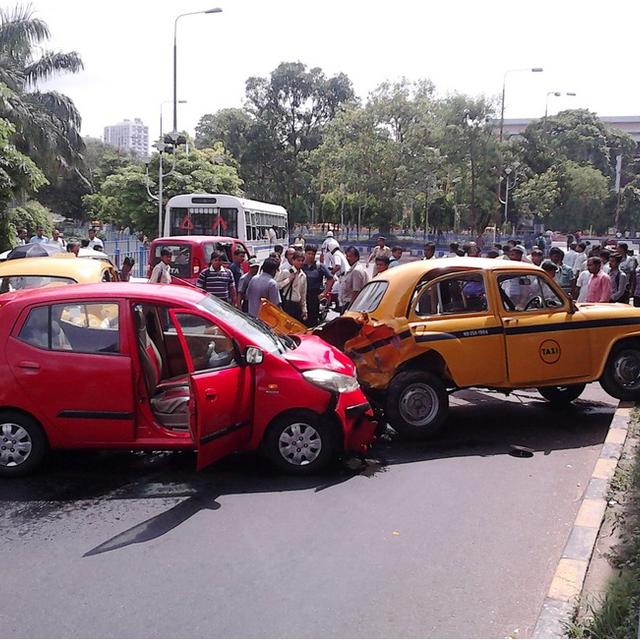In life, one often encounters material damage and harm or loss. Property damage must be correctly calculated and recovered from the guilty person in pre-trial or judicial proceedings.
What is property damage and loss
In order to quickly and fully recover from the person who caused the harm, its monetary equivalent, it is necessary to distinguish between the similar concepts of “damage”, “harm” and “loss”. To do this, consider the legislative wording of these concepts:
- The concept of harm can include both tangible and intangible components. It is expressed in violation of the rights and inviolability of the person (non-pecuniary damage) and in causing bodily harm that threatens human health (real property damage).
- Losses are infusions and investments of a material nature that the victim is forced to make to restore his violated rights or damaged property. Another notion associated with the concept of losses is “lost profit”. It differs from real damage in that it includes income and dividends that the victim could have received if he or his property had not been harmed.
Legislative regulation
The main regulatory act relating to damage of the direct type and its other varieties is Article 15 of the Civil Code of the Russian Federation. Other acts decipher the constituent parts of this concept and its application in practice.

The documents governing the rules for compensation for harm caused by the actions of the guilty person include the Administrative Code of the Russian Federation, the Labor Code of the Russian Federation, the Criminal Code of the Russian Federation, etc. Each area of human life has its own regulations. In addition, there are separate documents defining the rules and the procedure for calculating the amount of harm.
In the same case, if in a certain situation difficulties arise or a specific case cannot be precisely considered with the help of acts, judicial practice comes to the rescue. It is not a direct source of law, but is somehow used by judges when considering issues of causing direct damage. In addition, judicial practice is the main source for determining the amount of moral harm inflicted.
Direct and indirect damage
The separation of the concept of damage into two types is based on the reasons for its occurrence. If damage to property was caused exclusively and directly by the actions of the guilty person, this damage is direct. If its occurrence was accompanied by other related circumstances - indirect.
The legislation does not oblige the guilty person to compensate the victim for indirect losses. The offender must compensate for direct damage caused by his direct actions.

The injured party may refer to indirect losses only when it claims moral damages. In this situation, the court may increase the amount of non-pecuniary damage awarded to the defendant, based on the large financial losses of the plaintiff.
Claim for damages
The victim’s claim for direct damages is voluntary. The injured party may declare it, or may deal with the situation on their own.
The victim can claim the right to compensation both in pre-trial and in court. In the event that it is not a matter of the relationship between two citizens, but of the financial relationship of consumer consumers, commercial organizations or individual entrepreneurs, a pre-trial procedure for the consideration of a dispute is mandatory.
Legislation obliges such persons to file a claim with the guilty party before the court with a description of the circumstances of the case, calculation of the damage and the timing of its repayment. By the way, when submitting a claim, it is necessary to obtain confirmation that it was received by the guilty party. Otherwise, the claim will be considered not filed.
Both in pre-trial and judicial proceedings, the injured party is obliged to prove that it was she who suffered damage in a certain amount, or that she has the right to receive compensation for property damage caused.
Drawing up a claim
In the event that it is decided to resolve the dispute in court, it is necessary to draw up a statement of claim correctly.

The lawsuit must include the following information:
- name of the judicial authority;
- data of the claimant with the address of the place of registration and residence;
- data of the defendant with the address of the place of registration and actual location (if it is a legal entity);
- a detailed description of the circumstances of the case with all dates;
- references to applicable regulations;
- the essence of the claim of the injured party (recovery of material or moral damage and its size);
- an appendix with a list of documents included in it constituting the evidence base;
- date and signature;
- receipt of payment of state duty, without which the application will not be accepted.
As in the case of the claim, it is necessary to have documentary evidence that the documents were sent and received by the court.
Damage assessment
Regardless of the method of resolving a material dispute on compensation for direct damage, the amount of property damage will need to be assessed and proved. For this, different assessment methods are used. Unified is used only when calculating damage caused by non-fulfillment of obligations or their unfair performance. The presence of different techniques complicates the decision-making process regarding the actual and objective determination of size. For example, each expert agency has its own criteria for assessing car damage.

In general, the calculation of the assessment of property damage done in 3 stages:
- Drawing up a real estimate of the necessary repairs to restore damaged property, which is calculated on the basis of the market price of the work or necessary items in the area where the injured party lives.
- The degree of property depreciation when it comes to transport, other movable property or a building.
- Summation of the calculation results of both amounts.
During the process, the court will consider not only the calculation provided, but also the objectivity of the calculation, taking into account market prices.
Labor Damage
The issue of compensation for direct actual damage to the employer by the employee (or vice versa) requires careful consideration, since such disputes are quite frequent. Most courts side with the workers, but judges also verify the appraisal of property damage caused and the adequacy of its size.
The peculiarity of such disputes is that the employer in this case cannot claim claims for moral damage. This is due to the fact that, by definition, it is impossible for a legal entity to inflict moral harm.

In relation to adult workers who caused actual damage to the employer, if the necessary evidence is available, a decision is often made on the obligation to compensate the damage. In relation to employees under 18 years of age, a number of conditions apply to bring them to full liability:
- Causing property damage under the influence of alcohol, toxic or narcotic substances.
- Causing damage through an offense of an administrative nature or crime.
- Intentional damage to property or other actions that caused harm.
When considering questions about the amount of compensation, the court takes into account the circumstances of the damage, as well as the partial or full fault of the employer in this. The possibility of harming under the condition of extreme necessity is also being considered. If the employee acted professionally and could not influence the occurrence of damage, the employer will be denied the claim.
Compensation for damage in practice
In practice, redress often occurs pre-trial. In the event of an accident or other similar situations, the parties often voluntarily repair the damaged property. And when causing harm to health, the majority is limited to paying a sum of money without bringing the case to court.
Disputes between employers and workers are often also most often resolved by drawing up an installment agreement. In addition, the voluntary reimbursement process in this case is much simpler.

In the same case, if the issue of compensation for damage is resolved through an insurance company, the case is often brought to court due to the reluctance of the latter to pay or an underestimated damage assessment.
Assessing and redressing damage is a complex process. Therefore, in the event of such situations, it is necessary to prepare the necessary documents and carefully study options for resolving such issues.
